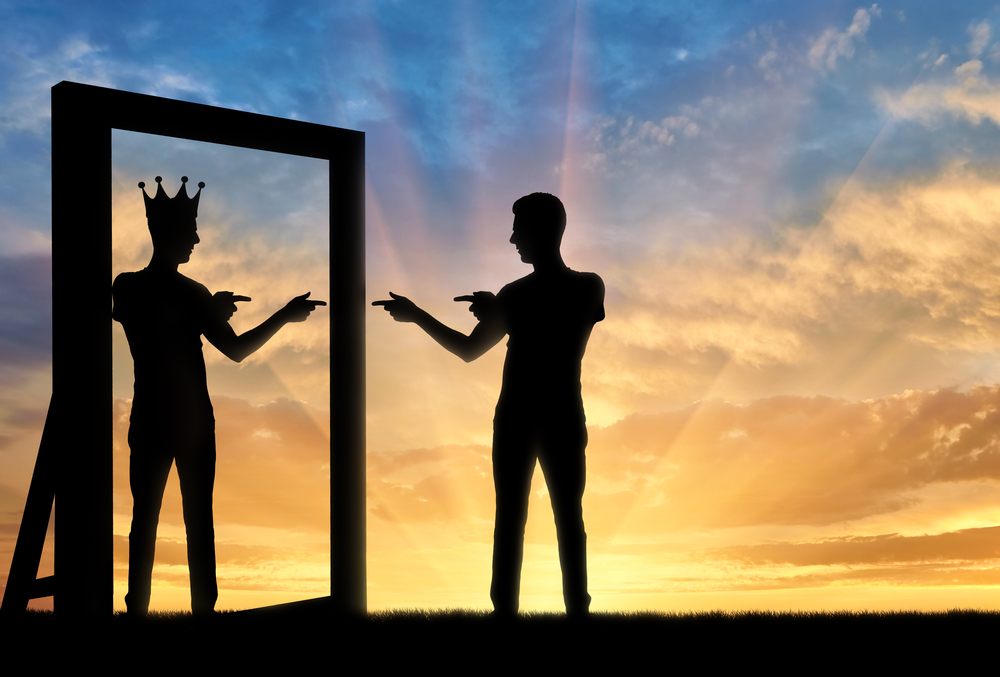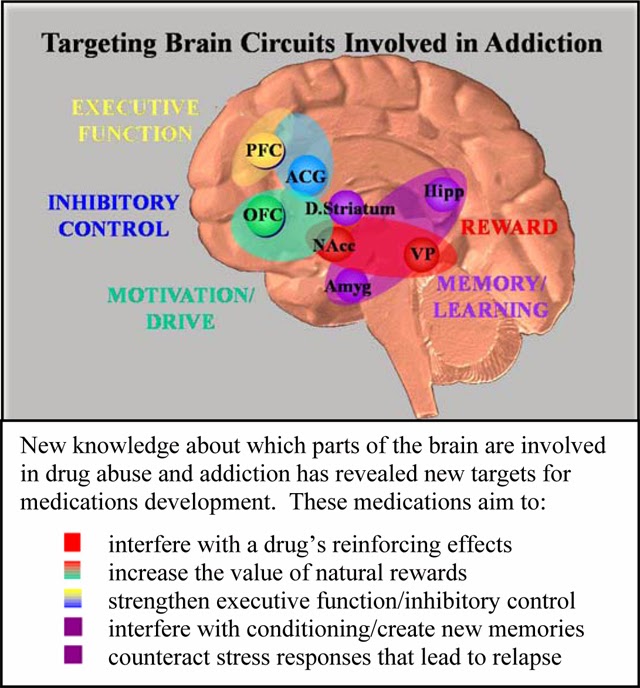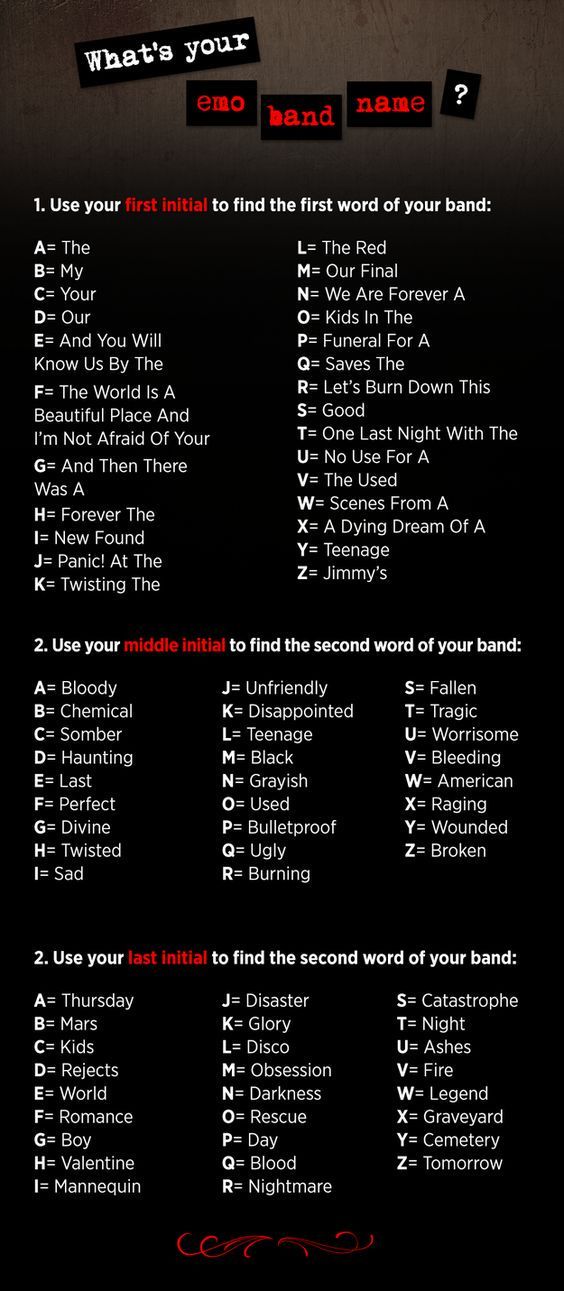Narcissist in history
The Top 13 Famous Narcissists In The Past And Present
It would be a mistake to think that just because someone has a personality disorder they can’t make a significant impact on the world. There have, in fact, been several famous narcissists in the past and in our recent history who have shaped world events and contributed — for good or for bad — to our shared cultural history.
While narcissism causes numerous dysfunctional traits in a person affected by NPD, it can also result in a perseverance and focus that helps the individual achieve their goals if for no other reason than to emphasize their importance.
Here are the top 13 famous narcissists from our past and present who have significantly impacted the lives of others:
- Alexander the Great
- Napoleon Bonaparte
- Henry VIII
- Adolph Hitler
- Donald Trump
- Madonna
- Kim Kardashian
- Kanye West
- Steve Jobs
- Jim Jones
- Kim Jung Un
- Mark Zuckerberg
- Ted Bundy
It’s interesting to see how many famous people have narcissistic traits that have worked in their favor. These 13 influential people have left their mark on history in many cases because of their narcissism rather than despite it.
While there wasn’t a psychologist there to examine Alexander the Great, he definitely showed many of the stereotypical characteristics that indicate he suffered from narcissistic personality disorder (NPD).
He thought in binary terms. You were either with him or against him. Those with him — his faithful soldiers — he took on numerous military campaigns, which cost many their lives, just for his personal conquests and glory. He never showed any emotion at the loss of his soldiers or generals. Instead, he focused solely on his grandiose vision for his life.
2. Napoleon BonaparteThe phrase, “Napoleon Complex,” which means to act overly aggressively in order to compensate for feelings of inferiority and low self-esteem, was named for Napoleon Bonaparte. Everyone who knew him believed him to be a tyrant, but his grandiose ideas prevented him from seeing that and caused him to believe he was special.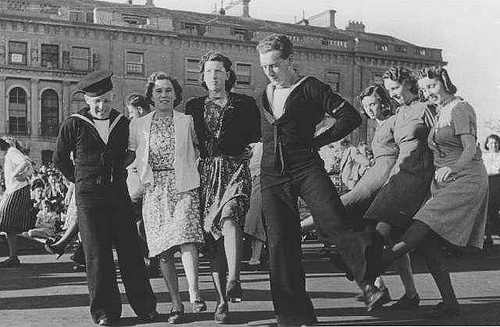
In his book, Thoughts, he wrote, “It was precisely that evening in Lodi that I came to believe in myself as an unusual person and became consumed with the ambition to do the great things that until then had been but a fantasy.”
3. Henry VIIIThough Henry VIII was considered handsome and charismatic, he was among the cruelest and most egotistical leaders throughout history. His vain quest for a son to be the heir to his throne caused him to behead two of wives and break ties with the Catholic Church and found the Church of England so he could divorce another. He lacked empathy and was said to be overly concerned about his appearance, all of which are typical narcissistic traits.
4. Adolf HitlerThere’s perhaps no better example of a narcissist than Adolf Hitler. He was without a doubt the cruellest leader in our modern history. He oversaw the slaughter of millions of innocent people, and he incited World War II. He did all of this because he believed himself and other white Germans to be a superior race to anyone else on the planet.
He showed no ability to empathize with his victims, many of whom he had tortured or experimented on prior to their deaths. He lied and spread false propaganda regarding the superiority of the aryan race, and he demanded total acquiescence from his followers. He typifies the worst qualities found in narcissists.
5. Donald TrumpDonald Trump is a leader in our recent history who shows all the qualities of a typical narcissist. He cares only about his needs, even dismissing the needs of his family members as unimportant when compared with his own. He is hypersensitive to any criticism and frequently interpreted any resistance to his policies as a suggestion that he failed or did something wrong.
He was constantly promoting himself above all others and that overshadowed any discussion of his policies as President of the United States. He was incredibly derisive of his political rivals, and like Hitler, he also demanded total acquiescence from his supporters.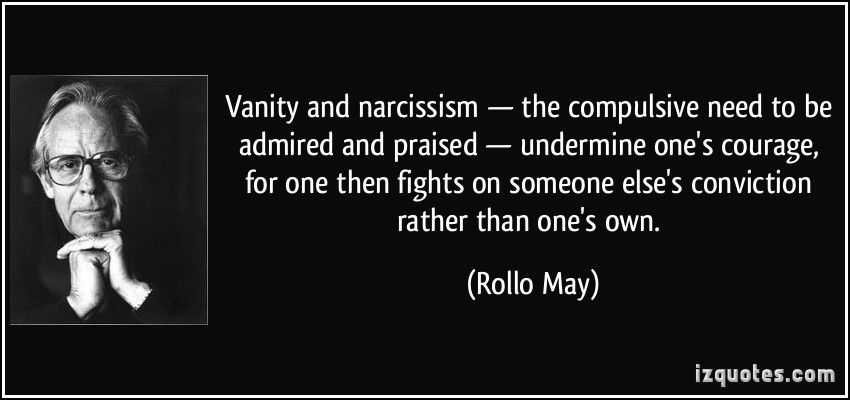 He showed no empathy for anyone he hurt and had frequent childish outbursts on his Twitter feed, the wording of which suggested he was in a narcissistic rage.
He showed no empathy for anyone he hurt and had frequent childish outbursts on his Twitter feed, the wording of which suggested he was in a narcissistic rage.
The singer Madonna is among some of the most famous entertainers who exemplifies the typical exhibitionistic narcissist. She has admitted that she craves the limelight and has found ways to reinvent her image when she felt that the attention of her fans was waning. She is also rumored to make unreasonable demands of her employees and apparently has little empathy for making them work long hours in difficult working conditions.
7. Kim KardashianKim Kardashian and Kanye West are a typical example of two narcissists who got married. Her narcissistic self-promotion has made her one of those people famous for no real reason other than their personality. She has constantly posted online updates of her daily life, and she is rumored to have released certain controversial materials like a sex tape in order to garner more fame.
Like his self-promoting wife, Kanye West will stop at nothing to stay in the limelight. This was perhaps best demonstrated when he grabbed the microphone from Taylor Swift at an awards show to proclaim his belief that another artist should have won that award. He humiliated Swift and made himself the center of attention. It didn’t even matter that much of the attention was negative.
He also declared that he was running for President during the 2020 elections in an attempt to grab the limelight from Donald Trump whom he claimed to support. It’s typical for narcissists to try and defeat people they admire because they believe that shows just how good they are. Though he and his narcissistic wife stayed married for seven years, they have since parted ways as is common for narcissistic couples.
9. Steve JobsWhile his charisma and charm attracted numerous investors and made him a billionaire, Steve Jobs was notoriously narcissistic to the extent that he was ultimately fired from his job. He was always preoccupied with how important he felt himself to be and his brilliance.
He was always preoccupied with how important he felt himself to be and his brilliance.
He lacked empathy for other people and consistently bullied and exploited those around him. He was also envious of the attention paid to other people, he was arrogant, and he was extremely controlling and manipulative. All of these characteristics make it obvious he suffered from narcissistic personality disorder.
10. Jim JonesJim Jones was one of the most notorious cult leaders in US history, and he was clearly narcissistic. He attracted over 900 followers whom he convinced to follow him to a commune he called Jonestown — named after himself — in Guyana in the 1970s. Later, when threatened with official action to free some of his followers, he incited them to commit mass suicide. Those who would not drink his poison Kool Aid were murdered by those followers who refused to question his orders.
He was clearly a narcissist, having no regard for the feelings of others as well as delusions of grandeur. He told his supporters he was the savior, and justified his abhorrent behavior, that included sexual abuse and violence, as a way to help people overcome their problems.
He told his supporters he was the savior, and justified his abhorrent behavior, that included sexual abuse and violence, as a way to help people overcome their problems.
As Christina Robinette notes, Kim Jung Un is a “classic narcissist.” He has claimed to have cured SARS, Ebola, and AIDS as well as to have climbed the tallest peak in North Korea despite the fact he’s physically unfit. He makes these outrageous claims while abusing the citizens of North Korea who risk being jailed or even put to death for not reacting with an obvious emotional response to news he might be in danger or even the simple fact that he’s just losing weight.
He has also allegedly killed potential rivals including his own brother who he reportedly had poisoned by a perfume sprayer. He lacks an ability to maintain relationships with other world leaders and demands constant attention and praise from those around him. He lacks any semblance of empathy as his citizens starve to death because of his leadership failures. Like many dictators, he is clearly narcissistic.
Like many dictators, he is clearly narcissistic.
Zuckerberg, who is the founder of Facebook, is what many people would call a productive narcissist. These are narcissists whose grandiose visions include a desire to change the world. They don’t believe, however, that they need to follow the same rules that everyone else has to follow. Zuckerberg definitely has broken many rules in his quest to transform the way we communicate. He is also aggressively competitive, a trait typical of productive narcissists.
13. Ted BundyTed Bundy was a psychopathic narcissist who confessed to having killed more than 30 women though many people believe he killed more than that. He was convicted of murder and executed in Florida in 1989. He had many narcissistic characteristics including his ability to charm women into helping him, a ruse he used to capture his victims.
He also was an accomplished manipulator and managed to escape custody twice. He was extremely self-centered and loved to be in the limelight. His narcissism was such that he represented himself at trial, and in a surreal spectacle, he referred to himself repeatedly as Mr. Bundy.
He was extremely self-centered and loved to be in the limelight. His narcissism was such that he represented himself at trial, and in a surreal spectacle, he referred to himself repeatedly as Mr. Bundy.
These 13 famous or infamous narcissists all of whom have or had several traits consistent with NPD do not represent an exhaustive list of famous narcissists throughout history. Some of them are or were positively productive while others have used their focus, charm, and any talents they might have had to commit unbelievably cruel acts.
Regardless of whether they have done good deeds or bad, however, all have shown the typical characteristics of narcissism. These include a lack of empathy, a desire for the limelight, and the inability to consider the needs of others. Even those who have contributed positively to our culture or to the world have not necessarily done so for altruistic reasons.
Now that you have a better understanding of how narcissism can manifest for good or for bad, you might also be interested in this articel about how narcissism is categorized in the DSM-5.
--
If you want more tips for dealing with narcissists, setting boundaries, and managing emotional triggers, make sure you subscribe to my youtube channelreport this ad
Famous Narcissists with Narcissistic Personality Disorder
Narcissistic personality disorder is characterized by delusions of grandiose, a lack of empathy, and the need and desire for constant praise. Therefore, it can be argued that many celebrities and public figures are narcissistic because as you will read, they share many characteristics that could be interpreted as narcissistic.
According to psychiatry professor Drew Pinsky’s study, famous people suffer from narcissism at a higher rate than the general public. To many, this would not come as a surprise considering the fact that over recent years, the word ‘narcissist’ has been thrown around like confetti. The assumption is that narcissists are vain individuals who can’t get enough of themselves.
But the reality is that they are desperately insecure, and for the famous person, the face they wear in public does not match the inner turmoil they endure. Here is a list of famous narcissists now and in history.
Here is a list of famous narcissists now and in history.
Table of Contents:
- 10 Famous Narcissists
- 10 Narcissist Celebrities
- 5 Most Narcissistic People in History
- 5 Historical Narcissistic Leaders
- 5 Famous Movie Characters with Narcissism
Disclaimer: This article is not a statement of facts, none of the people mentioned have been diagnosed with narcissistic personality disorder. However, they do display narcissistic tendencies in their behaviour.
10 Famous Narcissists
Fact About Narcissism: There is a positive side to narcissism; people with narcissistic personality disorder can be charming, intuitive and intelligent.
Let’s take a look at some of the famous people who show personality traits that suggest narcissism. Most of them show grandiose thinking and exaggerated self-importance, many believe or fantasise about the power they have, most believe they are special, need to be admired and feel entitled.
Many dictators and criminals had or have narcissistic personalities as well as the Hollywood celebrities; some are negative role models and some are positive. Hitler and Stalin both had grandiose self-images as did Casanova, Marquis de Sade, Peter Sellers, and the heart surgeon Christiaan Barnard. Other likely suspects are Madonna, Margaret Thatcher, Paris Hilton and O.J. Simpson. Here are just a few of the many famous narcissists
Donald Trump: According to developmental psychologist Howard Gardner, Donald Trump is a classic narcissist. Other experts have argued that it would be very easy to diagnose him with the disorder because he displays so many of the conditions symptoms, such as his domineering character and his willingness to demean people with no remorse.
Source: slate.comNiklas Bendtner: The Danish striker is quoted as saying, “If you ask me if I am one of the best strikers in the world, I say yes.” He believes this to be true despite the fact that during a top-flight season he has not scored more than nine goals. From his comment, it appears that he has one of the common narcissistic symptoms of delusions of grandiose.
From his comment, it appears that he has one of the common narcissistic symptoms of delusions of grandiose.
Jose Mourinho: Known for tooting his own horn in public, the infamous football coach Jose Mourinho once stated, “Please don’t call me arrogant, but I’m a European champion and I think I’m a special one.”
Image Source thedrum.comLarry Page: The American internet entrepreneur and computer scientist is one of the co-founders of Google. Experts believe he inhabits an alternate universe and seems to live in the future. His employees have described him as ‘terrifying’ during their interactions with him because his expectations are way too high.
Mark Zuckerberg: Mark Zuckerberg, the founder of Facebook has been referred to as a ‘productive narcissist’ by psychoanalyst and anthropologist Michael Maccoby. Productive narcissists are visionaries with a desire to change the world. They are aggressive, and competitive, and believe that they don’t need to follow the same rules as everyone else.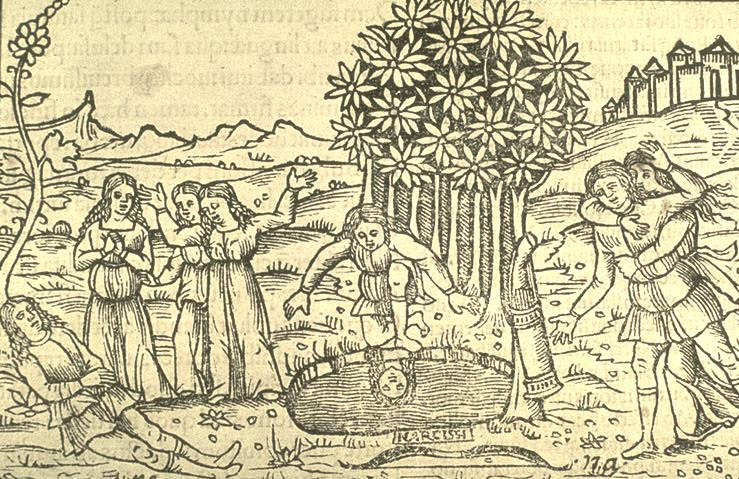
Kenya Moore: The ‘Real Housewives of Atlanta’ star feels the need to get involved in everyone’s business. Kenya believes that everything she says is of exceptionally high importance and slows down her speech intentionally to emphasize this.
Draya Michele: The American media personality, fashion designer, model, and actress suffers from a case of exceptionally high self-esteem and during an interview with US Weekly stated, “I’m an Aquarius. Yes, I believe we are superior.
Joseline Hernandez: The reality TV personality refers to herself in the third person and sincerely believes she is the most beautiful woman in the world. Hernandez believes she is indestructible, and despite the many rumours that continue to circulate about her personal life, her response is always the same, “It doesn’t matter cause I’m a bad b**ch!”
Rick Ross: “Am I really a narcissist because I woke up to a bowl of lobster bisque. ” One of his albums is titled, ‘Mastermind’ in which many of his songs are spent boasting about how great he is. The American rapper is very confident in himself, and sees nothing wrong with telling the world how awesome he is.
” One of his albums is titled, ‘Mastermind’ in which many of his songs are spent boasting about how great he is. The American rapper is very confident in himself, and sees nothing wrong with telling the world how awesome he is.
Tiger Woods: In his biography ‘Roaring Back – the Fall and Rise of Tiger Woods’; author Curt Sampson describes Woods as a pathological narcissist whose relationships were purely transactional. If you couldn’t help him achieve his goals, he didn’t want to have anything to do with you.
Image source: Sportscasting.comTed Bundy: This psychopathic serial killer had a number of characteristics of a narcissist like grandiosity and manipulation. He was also self-centered and enjoyed being in the public eye.
10 Narcissist Celebrities
Fact About Narcissism: Narcissists suffer from an empathy deficit, they are not capable of empathy in the same way as people who are considered mentally stable.
Kim Kardashian: Kim Kardashian has been accused of being narcissistic for many reasons, but one of them is that she uses her children as narcissistic supply. In a 2019 Instagram post, she films a video of her asking her children to tell her how much they love her.
In a 2019 Instagram post, she films a video of her asking her children to tell her how much they love her.
Kanye West: Media reports claim that the world famous rapper has an over inflated opinion of himself. West is probably one of the most famous narcissists; he has referred to himself as, “The new Kurt Cobain”, and believes his music is so fantastic it can cure cancer.
Mariah Carey: Narcissists have a tendency to engage in odd behaviors that are uncommon amongst the general public. Mariah Carey has publicly stated that she takes her baths in milk.
Madonna: The world renowned singer seems to have a habit of shamelessly stealing the limelight, and she has been pulled up on it on more than one occasion. Her public tributes to Aretha Franklin and Michael Jackson both focused more on herself than on these iconic figures.
Tom Cruise: News reports suggest that Tom Cruise was responsible for brainwashing Nicole Kidman’s adopted children against her, and that is the reason they no longer have a relationship. He is one of the many famous people with npd/narcissism. Narcissists are known to turn people against you when they break up with you.
He is one of the many famous people with npd/narcissism. Narcissists are known to turn people against you when they break up with you.
Justin Bieber: Reports suggest that the American singer continuously engages in reckless behaviour with no consideration given to those around him. Additionally, he once stated that the late Anne Frank would be a Bieber had she been alive today. Critics argue that a statement of this nature is inferring that his name is so important, someone as noteworthy as Anne Frank should be connected to it.
Kylie Jenner: Socialite and entrepreneur Kylie Jenner has been accused of being completely self obsessed. Apparently, her constant positing of selfies on social media teaches young girls that physical appearance is the most important aspect of a woman.
Image source: elitedaily.comDrake: The Canadian rapper Drake was accused of being a narcissist after he sent out a social media post paying tribute to Barak Obama leaving office. His farewell note included a photo shopped picture of the former president in which he had given Obama his beard and hairstyle.
His farewell note included a photo shopped picture of the former president in which he had given Obama his beard and hairstyle.
Beyoncé: The most famous female vocalist in the world was branded a narcissist after her documentary, “Life is but a Dream.” She was accused of being out of touch with reality, and living in her own fantasy world.
Angelina Jolie: The American actress has been accused of craving attention and desperately needs to be in the limelight. Producer Scott Rudin referred to her as a “spoiled brat with limited talent.”
Marilyn Manson: When confronted over the allegation that his music inspired Columbine Shootings, he simply denied any responsibility and stated that the killers needed more attention. Manson appeared self-centered, is exhibitionistic and enjoys being in the public eye.
O.J. Simpson: Simpson lacks empathy and is often envious of others. He also believes that he is special and deserves merit.
Paris Hilton: Paris lives in front of the camera-the world is her stage; she has been arrested for DUI, and seems to lack empathy.
The 5 Most Narcissistic People in History
Fact About Narcissism: Narcissim are not born, they are made; environmental factors play a larger role in the disorder than genetics.
Franklin Roosevelt: Roosevelt has been labelled as one of the most charismatic presidents in American history. According to experts, narcissists are extremely charismatic, and it is this characteristic that makes the disorder difficult to spot because they are able to convince everyone around them that they are perfectly normal.
Lyndon Johnson: The 36th president of the United States wanted to go down in history as the greatest president of America. His biographer Robert Caro referred to him as an exceptionally empty person who couldn’t stand to be alone and needed constant approval, affection, attention and companionship.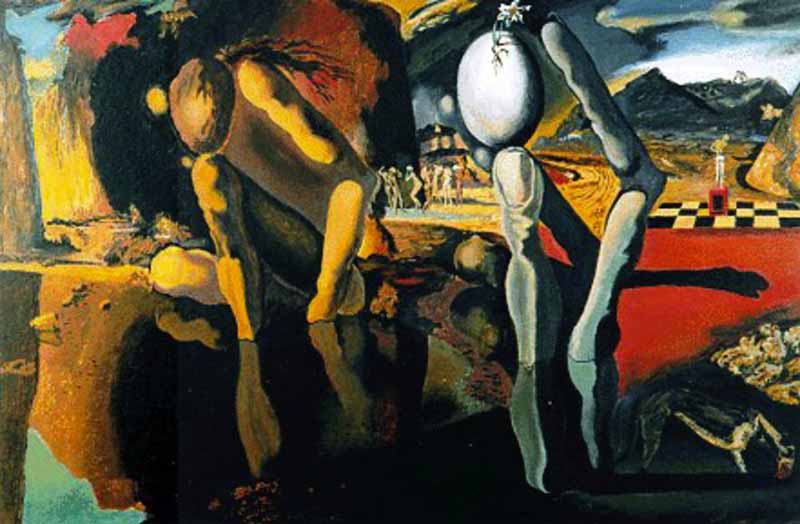
Nero: Donald Trump has been described as the modern day Nero. The famous Roman ruler bought complete devastation, and misery to the Roman people. He was known for craving attention and fame.
Alexander the Great: Critics argue that he served with a narcissistic leadership style because he failed to carry out his obligations as a statesman, and was more concerned with satisfying his own military passions.
Henry VIII: Experts argue that his behaviour was tantamount to that of a modern day serial killer, and have also labelled him as a psychopath. However, he was also very charming, selfish and ruthless, which are all characteristics of a narcissist.
5 Historical Narcissistic Leaders
Fact About Narcissism: Narcissism is rooted in self loathing and low-self esteem due to childhood trauma.
Adolph Hitler: Experts believe that Adolf Hitler was a pathological narcissist who so believed in his own superiority that everyone else should be put to death.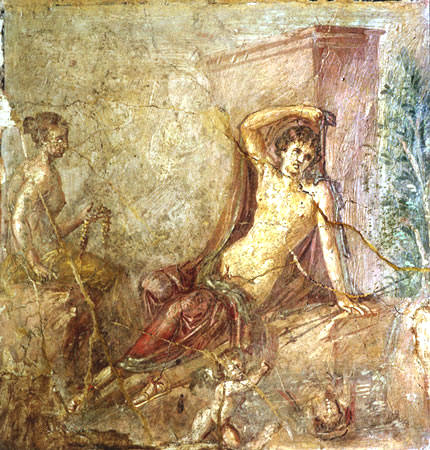 He managed to kill millions of Jews during the Holocaust.
He managed to kill millions of Jews during the Holocaust.
George Washington: George Washington was the first president of the United States. He has been accused of being a narcissist because he had an over-inflated confidence in his own judgements, and he strongly believed he earned his achievements. Many have argued against this.
Richard Nixon: The 37th president of the United States has been described as having an out of control ego. He openly referred to himself in the third person, and hated former presidents getting recognition for their achievements, namely John F. Kennedy.
Robert Mugabe: The late president of Zimbabwe wore clothes with his face on it, he was a vile villain who killed thousands, and destroyed the livelihoods of many more. Everything had to be done his way, and if it wasn’t, he went on a warpath. Narcissists are known for their controlling nature.
Josef Stalin: Experts describe the former leader of the Soviet Union a malignant narcissist.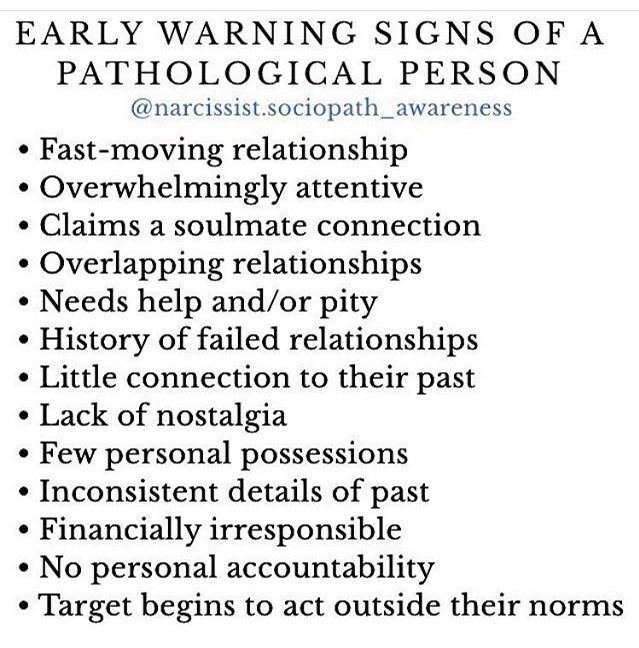 He ruled the nation with an iron fist and terrorised the people with his unpredictable behaviour. In classic narcissist style, he would have citizens tortured, he would then have them rescued and reward them.
He ruled the nation with an iron fist and terrorised the people with his unpredictable behaviour. In classic narcissist style, he would have citizens tortured, he would then have them rescued and reward them.
5 Famous Movie Characters With Narcissism
Fact About Narcissism: Narcissim is a spectrum disorder; in other words, some people are more narcissistic than others.
Miranda Priestly: The lead character in the movie ‘The Devil Wears Prada’ was an egomaniac who was obsessed with her physical appearance. Priestly was cold, and demanding, and expected perfection from her employees. Anything short of the best was met with intense criticism.
Jenna Maroney: Is the lead character in the television series ‘30 Rock’, shesuffers from delusions of grandiose. Maroney believes she is entitled to special treatment and that everyone around her should worship her. However, her achievements are not worthy of the recognition she thinks she is due.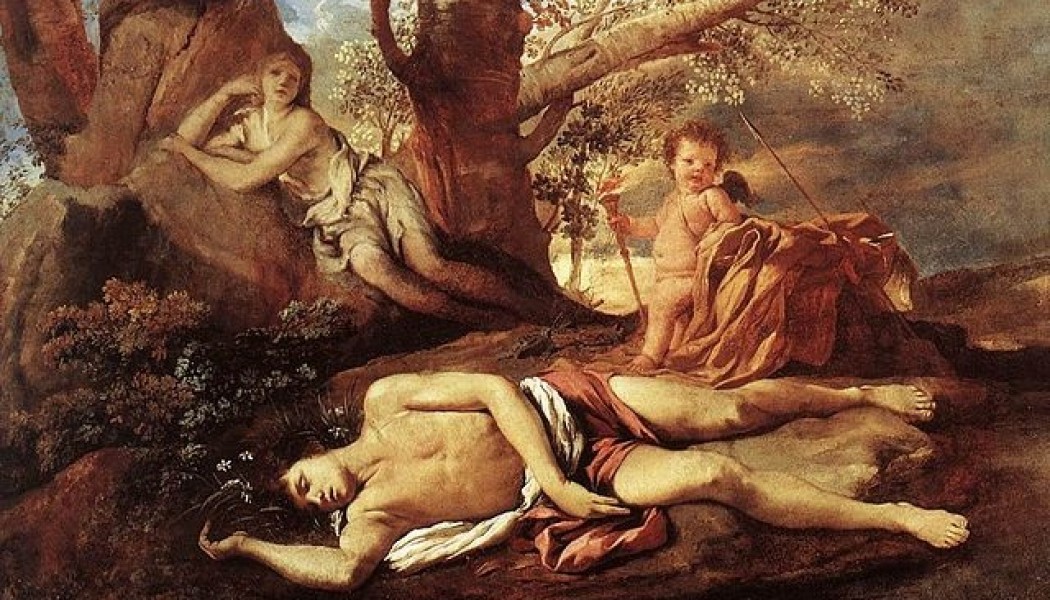
Violet Weston: Violet Weston is a character in ‘August: Osage County’, she is emotionally abusive and cruel. Weston is also heavily addicted to narcotics, all of which are character traits of a narcissist.
Gilderoy Lockhart: Described as ‘everyone’s favourite narcissist’, this character in ‘Harry Potter and the Chamber of Secrets’ is described as a pathological liar who tells so many lies that he believes in his own stories. He is also convinced that he is someone of grand importance to the world.
Zaphod Beeblebrox: Zaphod Beeblebrox is a fictional character in the TV series ‘The Hitchhiker’s Guide to the Galaxy.’ One of his many quotes that display his narcissistic character is, “If there’s anything more important than my ego around, I want it caught and shot now.” He is also an extrovert, untrustworthy, irresponsible, clever and imaginative.
Final Thoughts
Everyone admires celebrities, public figures and industry leaders for their massive success.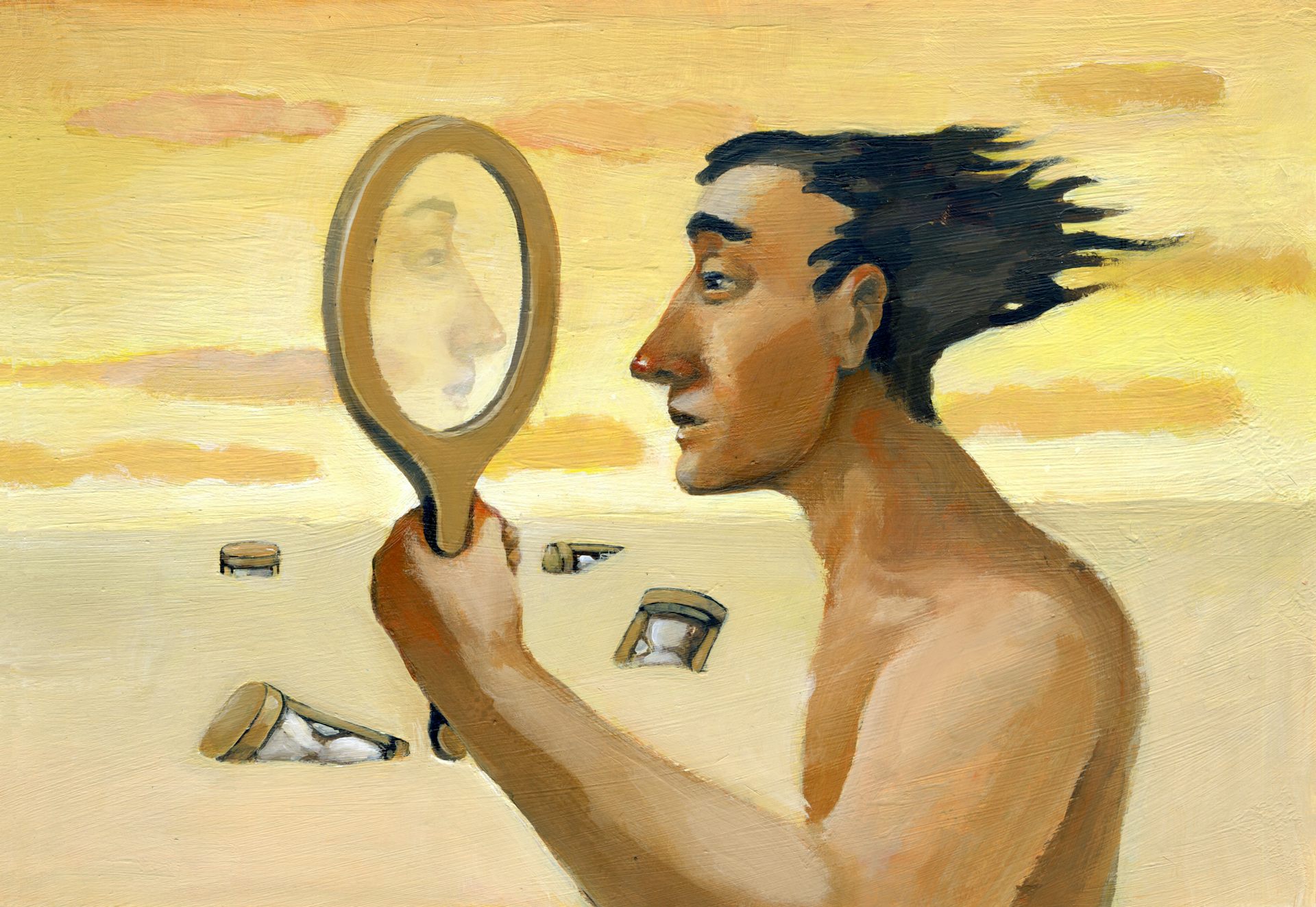 The entertainment industry is a multibillion dollar machine driven by those who buy into the image of high profile people.
The entertainment industry is a multibillion dollar machine driven by those who buy into the image of high profile people.
But from the information presented, it is clear that they all have their own challenges to deal with. As much as we all love pointing the finger at self-obsessed narcissistic celebrities, the reality is that narcissism is a crippling condition steeped in desperately painful feelings of self-loathing, and insecurity.
These people have had terrible childhoods, case in point Madonna; she lost her mother at the age of five. She was forced to take care of her younger siblings and grew up before her time. Psychologists argue that such treatment during childhood stunts emotional growth, and this can cause narcissism during adulthood.
What we see in public, is not what is displayed in private. Despite their millions and billions, many of them are suffering more than we could possibly imagine.
Wo do you believe is missing on these lists?
Last Updated on August 12, 2022 by Alexander Burgemeester
Incredible Pros, Inevitable Cons - Master's Program in Psychoanalysis and Psychoanalytic Business Consulting - National Research University Higher School of Economics
Many of the leaders we see today resemble the personality type that Sigmund Freud called narcissistic.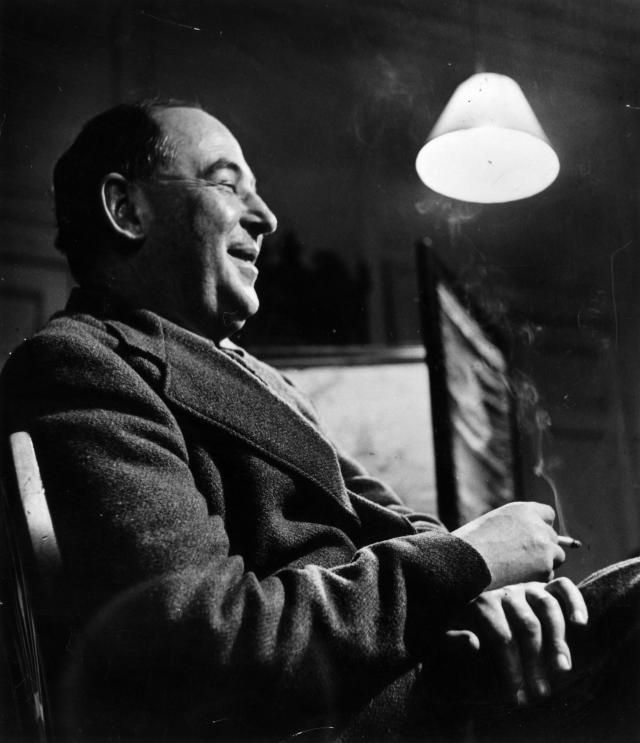 “People of this type give the impression of “personalities” to others,” he said, describing one of the psychological types that falls within the normal range. “They are especially suited to serve as a support to others, to take on the role of leaders, to give new impetus to cultural development or to damage the existing one.”
“People of this type give the impression of “personalities” to others,” he said, describing one of the psychological types that falls within the normal range. “They are especially suited to serve as a support to others, to take on the role of leaders, to give new impetus to cultural development or to damage the existing one.”
Throughout history, daffodils have appeared to inspire people and build the future. When the military, religious, and political arenas dominated society, figures such as Napoleon Bonaparte, Mahatma Gandhi, and Franklin Delano Roosevelt set the public agenda. But from time to time, when business has become a force for social change, it has also generated its fair share of narcissistic leaders. This was the case at the beginning of this century, when people like Andrew Carnegie, John D. Rockefeller, Thomas Edison, and Henry Ford used new technologies and restructured American industry. And I think it's true again today.
But Freud saw that there is also a dark side to narcissism.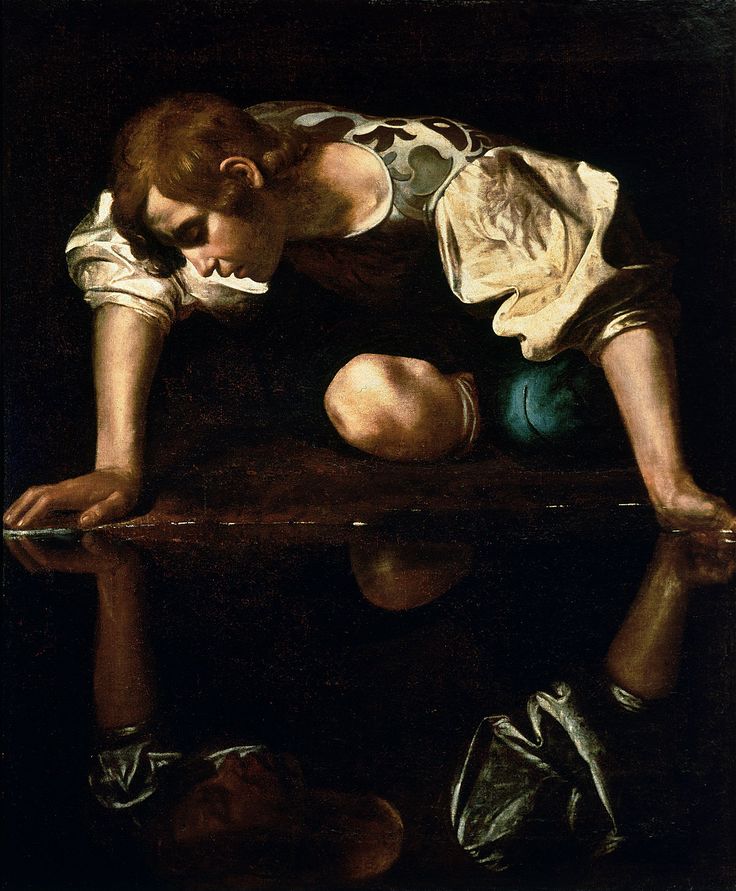 Narcissists, he noted, are emotionally isolated and very distrustful. Perceived threats can make them angry. Achievements can feed a sense of their grandiosity.
Narcissists, he noted, are emotionally isolated and very distrustful. Perceived threats can make them angry. Achievements can feed a sense of their grandiosity.
However, according to Michael Maccoby, narcissism can be extremely helpful, even necessary. Freud changed his mind about narcissism over time and acknowledged that we are all somewhat narcissistic. Later, the psychoanalyst Heinz Kohut, based on the work of Freud, developed treatments for narcissism. Of course, only a professional clinician is trained to determine whether a particular case of narcissism is normal or pathological.
What is the difference between productive and unproductive narcissism?
Leaders such as Jack Welch or George Soros are examples of productive narcissists. They are gifted and creative strategists who see the big picture and find meaning in the risky business of changing the world, leaving behind a legacy. Indeed, one of the reasons we count on productive narcissists in times of change is because they have the audacity to push through the massive transformations that society periodically undertakes. Productive narcissists are not only risk-takers willing to get things done, but also charming speakers who can get the masses to convert to a new faith. The danger is that narcissism can turn counterproductive when a lack of self-knowledge and holding anchors turn narcissists into unrealistic dreamers. They cherish grandiose plans and harbor illusions that only circumstances or enemies prevented their success this time. This tendency to grandiosity and distrust is the Achilles' heel of narcissism. Because of this, even the most brilliant of narcissists can be suspected of excessive self-involvement, unpredictability, and - in extreme cases - paranoia. It's easy to see why narcissistic leadership doesn't always mean successful. Consider the case of Per Gyllenhammer of Volvo. He had a dream that appealed to a wide global audience. He had a plan to redesign the industrial workplace by abolishing the inhumanity of the assembly line, caricatured by Charlie Chaplin in Modern Times. His wildly popular vision called for team assembly by craftsmen.
Productive narcissists are not only risk-takers willing to get things done, but also charming speakers who can get the masses to convert to a new faith. The danger is that narcissism can turn counterproductive when a lack of self-knowledge and holding anchors turn narcissists into unrealistic dreamers. They cherish grandiose plans and harbor illusions that only circumstances or enemies prevented their success this time. This tendency to grandiosity and distrust is the Achilles' heel of narcissism. Because of this, even the most brilliant of narcissists can be suspected of excessive self-involvement, unpredictability, and - in extreme cases - paranoia. It's easy to see why narcissistic leadership doesn't always mean successful. Consider the case of Per Gyllenhammer of Volvo. He had a dream that appealed to a wide global audience. He had a plan to redesign the industrial workplace by abolishing the inhumanity of the assembly line, caricatured by Charlie Chaplin in Modern Times. His wildly popular vision called for team assembly by craftsmen. Advertising model factories were built and shown to the press to huge international success. But his success in bringing about these dramatic changes also sowed the seeds for his downfall. Gyllenhammer began to feel that he could ignore requests from his operational units. He chased risky and expensive new deals, which he covered on television and in the press. On the one hand, you may think that Gyllenhammer's downfall was due to his wrong strategy. But it could also be the result of his narcissistic personality. His overestimation of himself led him to believe that others wanted him to be the king of a multinational enterprise. In turn, these fantasies led him to a merger with Renault, which was extremely unpopular with Swedish employees. Since Gyllenhammer was deaf to the complaints against Renault, the Swedish managers were forced to take the case to court and make it public. In the end, the shareholders aggressively rejected Gyllenhammer's plan, leaving him no choice but to resign
Advertising model factories were built and shown to the press to huge international success. But his success in bringing about these dramatic changes also sowed the seeds for his downfall. Gyllenhammer began to feel that he could ignore requests from his operational units. He chased risky and expensive new deals, which he covered on television and in the press. On the one hand, you may think that Gyllenhammer's downfall was due to his wrong strategy. But it could also be the result of his narcissistic personality. His overestimation of himself led him to believe that others wanted him to be the king of a multinational enterprise. In turn, these fantasies led him to a merger with Renault, which was extremely unpopular with Swedish employees. Since Gyllenhammer was deaf to the complaints against Renault, the Swedish managers were forced to take the case to court and make it public. In the end, the shareholders aggressively rejected Gyllenhammer's plan, leaving him no choice but to resign
The three main personality types in business
While Freud understood that there was an almost infinite variety of personalities, he identified three main types: erotic (sensual), obsessive (pedantic), and narcissistic.
Most of us have elements of all three. We are all somewhat narcissistic, for example. If this were not so, we would not be able to survive or defend our needs. The issue is that one of the dynamic tendencies tends to dominate the others, causing each of us to react differently to success and failure. Freud's definition of these three personality types has changed over time.
Speaking about the erotic personality type, he, as a rule, did not mean the sexual personality, but the one for whom to love and, above all, to be loved is the main one. This type of person depends on those who, as he thinks, can stop loving them. Many erotica are teachers, nurses and social workers. At their most productive, they are engaged in youth development, empowerment, and help at work. As managers, they are caring, encouraging subordinates, but they avoid conflict and make people dependent on themselves. They are, according to Freud, outwardly directed people.
Obsessives, on the other hand, are "inward directed. " They are self-reliant and very conscious. They create and maintain order and make the most effective executive managers. They are constantly looking for ways to teach people to listen better, resolve conflicts, and find opportunities for mutual benefit. They buy self-improvement books like The 7 Habits of Highly Effective People by Stephen Covey. Obsessives are also ruled by a strict Superego and like to focus on continuous improvement at work because it fits in with their sense of moral excellence. Like entrepreneurs, obsessives start businesses that express their values, but they don't have the vision, audacity, and charisma that it takes to turn a good idea into a great one. The best compulsives set high standards and communicate extremely effectively. They will make sure that the instructions are followed and that the costs are within budget. The most productive of them are great mentors and team players. The unproductive and uncooperative become narrow specialists and rigid bureaucrats.
" They are self-reliant and very conscious. They create and maintain order and make the most effective executive managers. They are constantly looking for ways to teach people to listen better, resolve conflicts, and find opportunities for mutual benefit. They buy self-improvement books like The 7 Habits of Highly Effective People by Stephen Covey. Obsessives are also ruled by a strict Superego and like to focus on continuous improvement at work because it fits in with their sense of moral excellence. Like entrepreneurs, obsessives start businesses that express their values, but they don't have the vision, audacity, and charisma that it takes to turn a good idea into a great one. The best compulsives set high standards and communicate extremely effectively. They will make sure that the instructions are followed and that the costs are within budget. The most productive of them are great mentors and team players. The unproductive and uncooperative become narrow specialists and rigid bureaucrats.
Narcissists, the third type, are independent and hard to impress. They are innovators driven in business by a desire for power and glory. Productive narcissists are experts in their fields, but they go beyond that. They also ask critical questions. They want to know everything about everything that affects the company and its products. Unlike erotic people, they want to be admired, not loved. And unlike obsessives, they are not bothered by a punishing superego, so they can be very aggressive in achieving their goals. Of all three types, narcissists are the most at risk of isolating themselves in the moment of success. Due to their independence and aggressiveness, they are constantly on the lookout for enemies, sometimes degenerating into paranoia under the influence of excessive stress.
To the list of articles on Coaching and business consulting
To the list of articles on the Clinical management paradigm
To the list of articles on History and theory of psychoanalysis
To the list of articles by A. V. Rossokhin in the journal "Psychologies"
V. Rossokhin in the journal "Psychologies"
Legend of Narcissus - Flower legends, myths and stories. Florets.ru
"The tulip and bitterweed lit up with love,
And the wondrous handsome man, Narcissus in love,
Blossomed over the stream and looks at himself,
Until he dies, loving endlessly..."
(Shelly "Mimosa")
This flower has been so much praised by poets of all countries and centuries, like no other, except perhaps a rose. Mohammed himself said about him: "He who has two loaves, let him sell one to buy a flower of narcissus, for bread is food for the body, and narcissus is food for the soul." And the Persian king Cyrus called him "the creation of beauty - an immortal delight."
He was also admired by Shakespeare, who charmingly described him in his tragedy "The Tempest", Edgar Allan Poe, who described him as one of the flowers of that "valley of multi-colored herbs", where he managed to experience heavenly love. The German poet Isidore Orientalis, looking at the narcissus, exclaims: "This slender figure, this wonderful head bends towards itself and, shining with eternal beauty, seems to be looking for a source."
The German poet Isidore Orientalis, looking at the narcissus, exclaims: "This slender figure, this wonderful head bends towards itself and, shining with eternal beauty, seems to be looking for a source."
The reason for such universal admiration for him is partly the very beauty and elegance of the flower, and most importantly, as it seems to us, the myth that has developed about him in ancient times, which made his name a household name; To call someone a "narcissus", as you know, is the same as saying: this person is in love with himself. This is where the term narcissism comes from. In the language of flowers, "narcissus" means deceptive hopes, desires, selfishness.
There is an ancient Greek legend about the beautiful Narcissus about the origin of the flower. The river god Cefiss and the nymph Lirioessa had a son, a beautiful young man who rejected the love of the nymph Echo. For this he was punished: when he saw his own reflection in the water, he fell in love with him.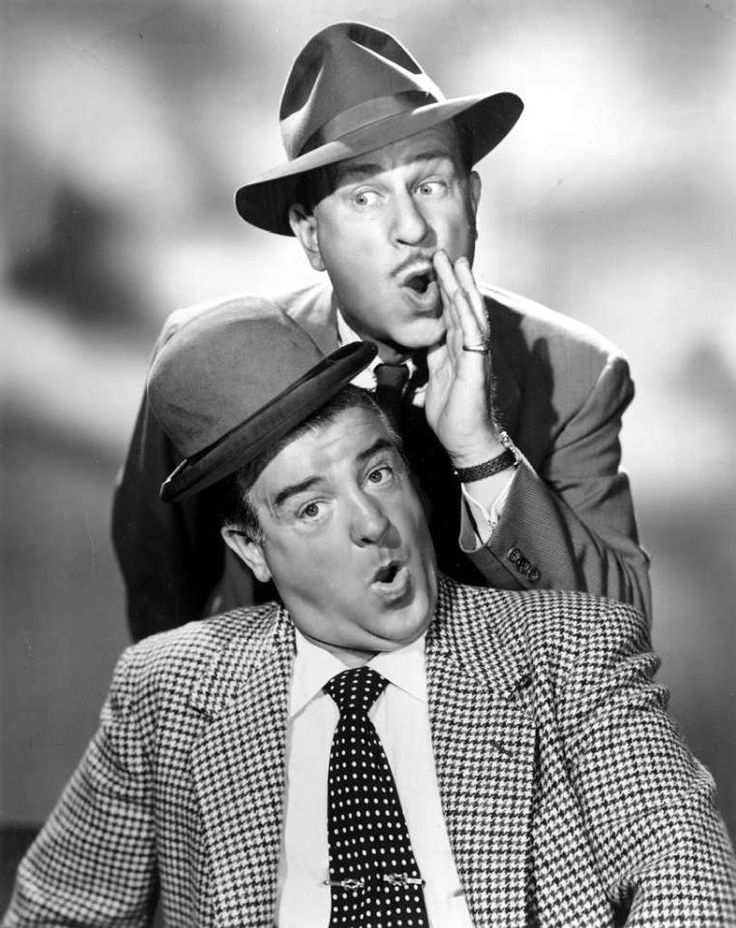 Tormented by an insatiable passion, he died, and in memory of him there remained a beautiful, fragrant flower, the corolla of which leans downwards, as if wishing to once again admire himself in the water. The parents of the young man at one time turned to the oracle Tireseus. The soothsayer said that Narcissus would live to old age if he did not see his face. Narcissus grew up a young man of extraordinary beauty, and many women sought his love, but he was indifferent to everyone. When the nymph Echo fell in love with him, the narcissistic young man rejected her passion. The nymph withered from hopeless passion and turned into an echo, but before her death she cursed: "Let the one whom he loves not reciprocate with Narcissus."
Tormented by an insatiable passion, he died, and in memory of him there remained a beautiful, fragrant flower, the corolla of which leans downwards, as if wishing to once again admire himself in the water. The parents of the young man at one time turned to the oracle Tireseus. The soothsayer said that Narcissus would live to old age if he did not see his face. Narcissus grew up a young man of extraordinary beauty, and many women sought his love, but he was indifferent to everyone. When the nymph Echo fell in love with him, the narcissistic young man rejected her passion. The nymph withered from hopeless passion and turned into an echo, but before her death she cursed: "Let the one whom he loves not reciprocate with Narcissus."
According to this legend K.P. Bryullov painted his famous painting "Narcissus looking into the water." (1819). It depicts a young man admiring his own reflection in the water. This picture can be seen in the State Russian Museum.
According to another, no less sad and beautiful legend, Narcissus suddenly lost his twin sister. Leaning over the stream in inconsolable grief, he saw in his own reflection the features of his beloved sister. No matter how much he dipped his hands into the water to embrace his native image, but it was all in vain... So he died of grief, bending over the water. And the flower arose on the spot, symbolizing the bowed image of a beautiful young man.
Leaning over the stream in inconsolable grief, he saw in his own reflection the features of his beloved sister. No matter how much he dipped his hands into the water to embrace his native image, but it was all in vain... So he died of grief, bending over the water. And the flower arose on the spot, symbolizing the bowed image of a beautiful young man.
As a result of all this, among the ancient Greeks, the narcissus was the flower of the dead, the flower of the dead, and it is often this emblem in ancient Greek mythology. Since time immemorial, narcissists have been called narcissists and the legend of the beautiful Narcissus is, of course, "guilty" of that. But in ancient Rome, the daffodil was a symbol of victory. Among the Romans, a wreath of yellow daffodils was greeted by warriors - winners who returned from the war.
He also enjoyed great success with Roman fashionistas. The Egyptians, ancient Greeks and Romans cultivated daffodils not only as ornamentals, but also as valuable essential oil plants.